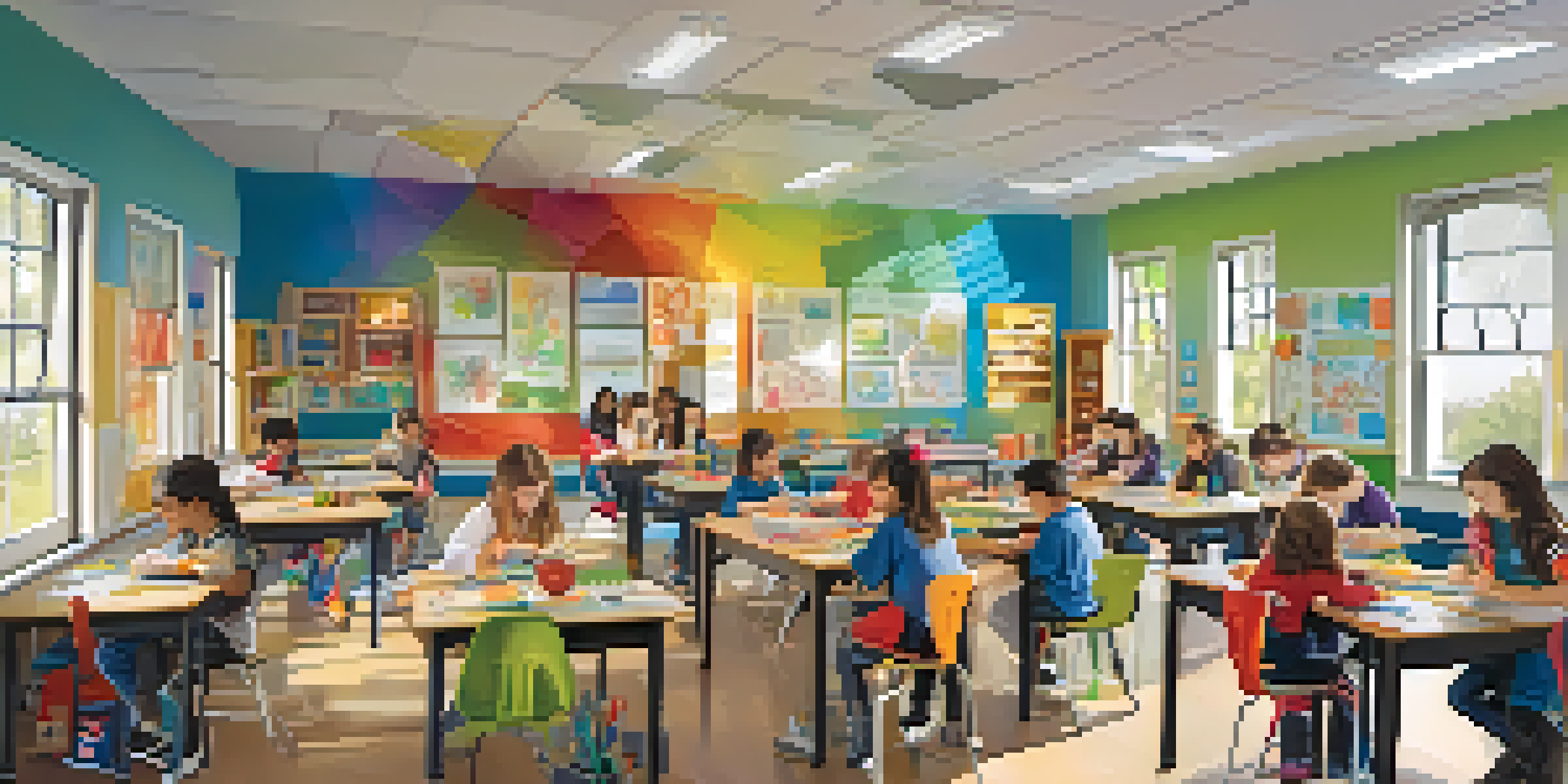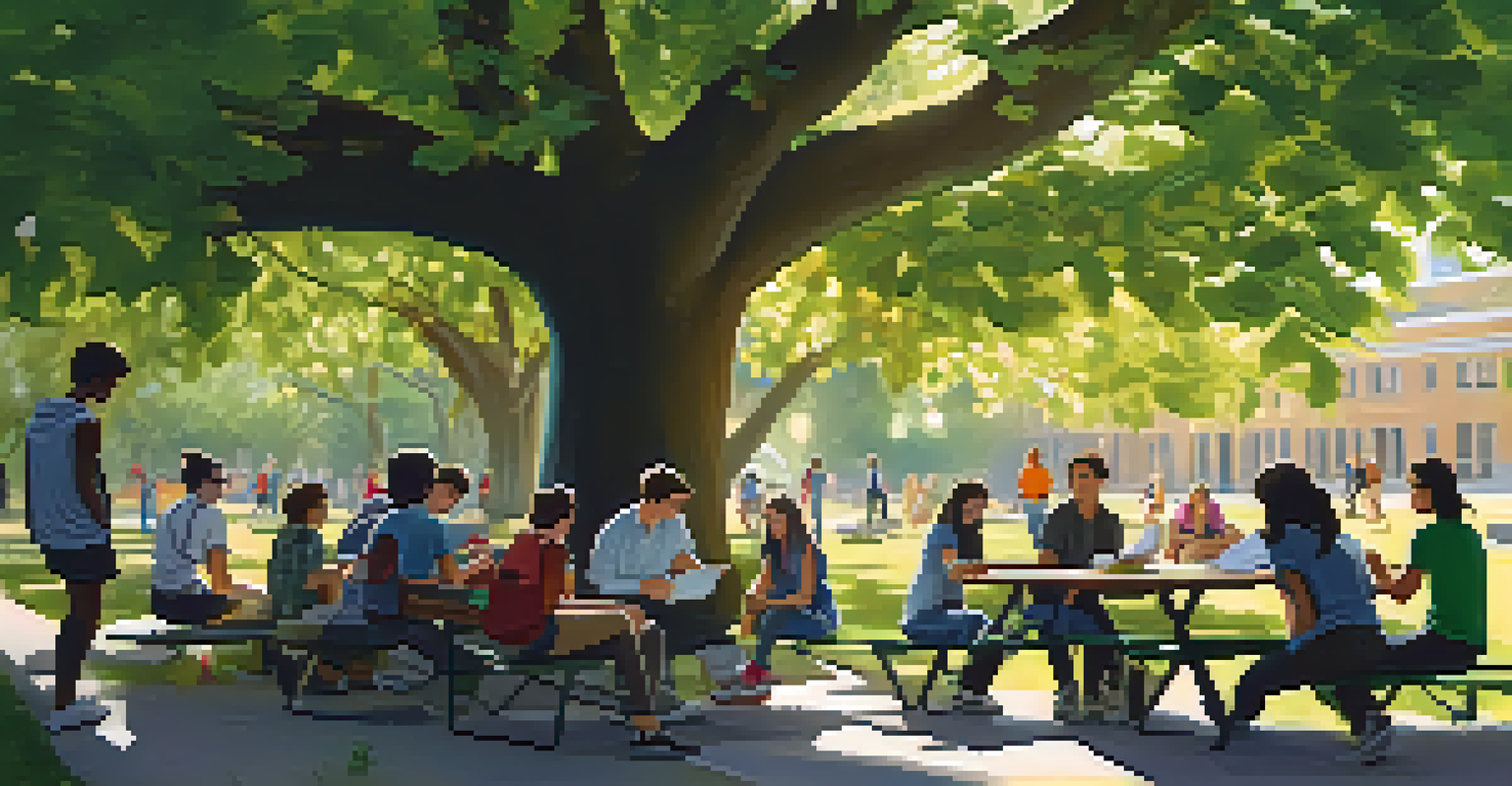The Role of Experiential Learning in Student-Centered Approaches

Understanding Experiential Learning and Its Importance
Experiential learning is a hands-on approach where students engage directly in their learning experiences. This method contrasts with traditional learning, which often relies heavily on lectures and rote memorization. By actively participating in the learning process, students can better internalize information and skills.
Tell me and I forget, teach me and I remember, involve me and I learn.
For example, rather than merely reading about scientific principles, students might conduct experiments to observe these principles in action. This type of engagement fosters deeper understanding and retention of knowledge. Ultimately, experiential learning encourages students to take ownership of their education.
Furthermore, it cultivates essential life skills, such as critical thinking, problem-solving, and collaboration. These skills are vital in today's ever-evolving world, making experiential learning an indispensable part of modern education.
The Shift to Student-Centered Learning Approaches
Student-centered learning places students at the heart of the educational process. This approach recognizes that each student learns differently and tailors the learning experience accordingly. By shifting the focus from teaching to learning, educators can better meet the diverse needs of their students.

This shift involves encouraging students to take an active role in their education, fostering independence and self-directed learning. For instance, group projects allow students to collaborate, share ideas, and learn from one another. This not only enhances their understanding but also builds essential social skills.
Experiential Learning Enhances Retention
Engaging actively with material through hands-on experiences leads to better long-term retention of knowledge.
In essence, student-centered learning promotes a more inclusive and engaging educational environment. By valuing students' voices and choices, educators can inspire a genuine love for learning that lasts a lifetime.
Connecting Experiential Learning and Student-Centered Approaches
Experiential learning and student-centered approaches complement each other beautifully. When students are actively involved in their learning, they are more likely to feel engaged and invested in their education. This synergy creates a dynamic learning environment where students thrive.
Learning is not the product of teaching. Learning is the product of the activity of learners.
For instance, project-based learning is a prime example of this connection. Students work on real-world projects that interest them, applying their knowledge in practical ways. This not only reinforces what they've learned but also helps them see the relevance of their education in the world around them.
Moreover, integrating experiential learning into student-centered approaches fosters a culture of curiosity and exploration. This encourages students to ask questions, seek answers, and develop a lifelong love for learning.
Benefits of Experiential Learning for Students
One of the primary benefits of experiential learning is enhanced retention of information. When students actively engage with material, they are more likely to remember it long-term. This is because they can connect theoretical knowledge to practical experiences, making learning more meaningful.
Additionally, experiential learning helps students develop critical soft skills. Skills such as communication, teamwork, and adaptability are often best learned through real-life experiences. For instance, students might work together on a community service project, honing their ability to collaborate and solve problems as a team.
Student-Centered Learning Empowers Learners
By placing students at the core of the educational process, this approach fosters independence and a genuine love for learning.
Overall, the benefits of experiential learning extend far beyond academic success. Students emerge from these experiences more confident, capable, and prepared for the challenges of the future.
Challenges in Implementing Experiential Learning
Despite its many advantages, implementing experiential learning can come with challenges. Limited resources, time constraints, and varying levels of student readiness can hinder the effectiveness of this approach. Educators must find creative solutions to overcome these obstacles.
For example, schools may lack the funding for field trips or specialized materials for hands-on projects. In such cases, teachers can consider virtual experiences or community partnerships that provide alternative avenues for experiential learning. This adaptability can ensure that all students have access to meaningful experiences.
Moreover, educators must be prepared to support students in navigating these experiences. Providing guidance and scaffolding can help students maximize their learning potential and ensure they gain the most from their experiential learning opportunities.
Creating an Experiential Learning Environment
To foster an effective experiential learning environment, educators should prioritize collaboration and creativity. Classrooms can be transformed into dynamic spaces where students feel safe to explore and experiment. This might include flexible seating arrangements, interactive learning stations, or outdoor classrooms.
Encouraging student input in designing their learning experiences further enhances this environment. By allowing students to voice their interests and preferences, educators can tailor activities that resonate with their learners. This builds a sense of ownership and investment in the learning process.
Future Trends Embrace Experiential Methods
The integration of technology and a focus on social-emotional learning will increasingly highlight the role of experiential learning in education.
Ultimately, creating an experiential learning environment requires a commitment to student engagement and empowerment. By focusing on collaboration, creativity, and student voice, educators can cultivate a vibrant learning community.
Future Trends in Experiential Learning and Education
As education continues to evolve, experiential learning is likely to play an increasingly prominent role. With the rise of technology, virtual and augmented reality experiences are becoming more accessible, offering students innovative ways to engage with their learning. These tools can provide immersive experiences that traditional methods simply cannot match.
Additionally, the emphasis on social and emotional learning in education aligns well with experiential learning practices. Educators are recognizing the importance of developing the whole child, and experiential learning provides a unique opportunity to nurture emotional intelligence and resilience.

Looking ahead, the integration of experiential learning into curricula will likely become more prevalent. By embracing these trends, educators can better prepare students for the complexities of the modern world, ensuring they are ready to face the future with confidence.